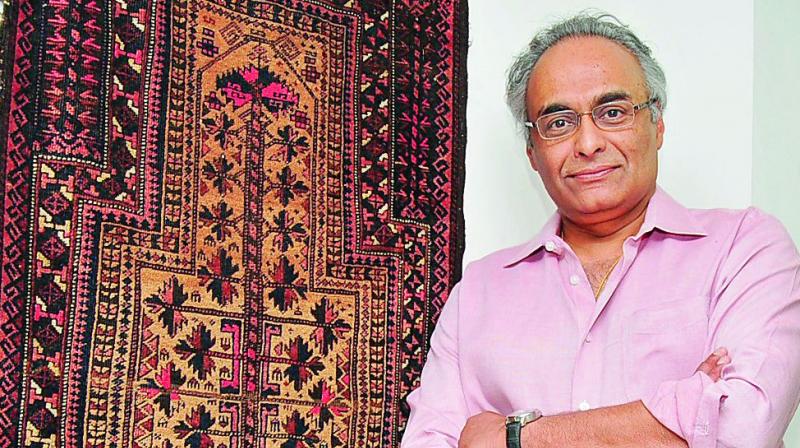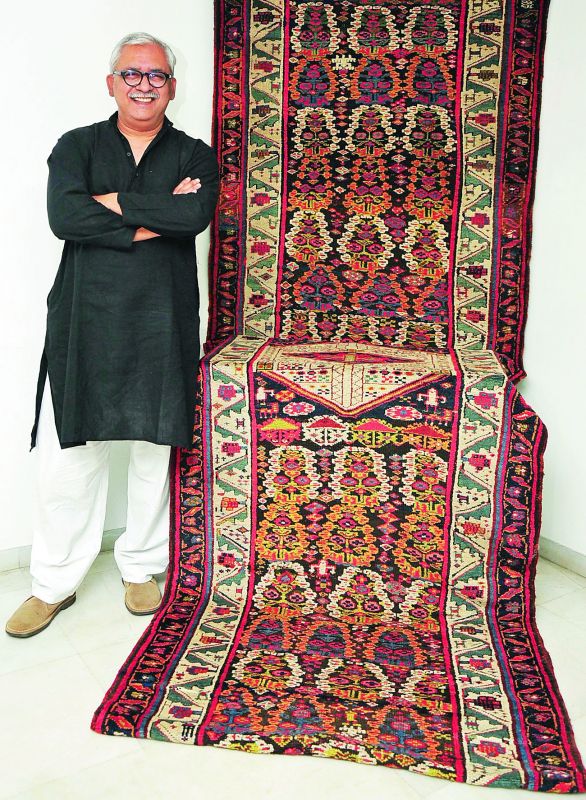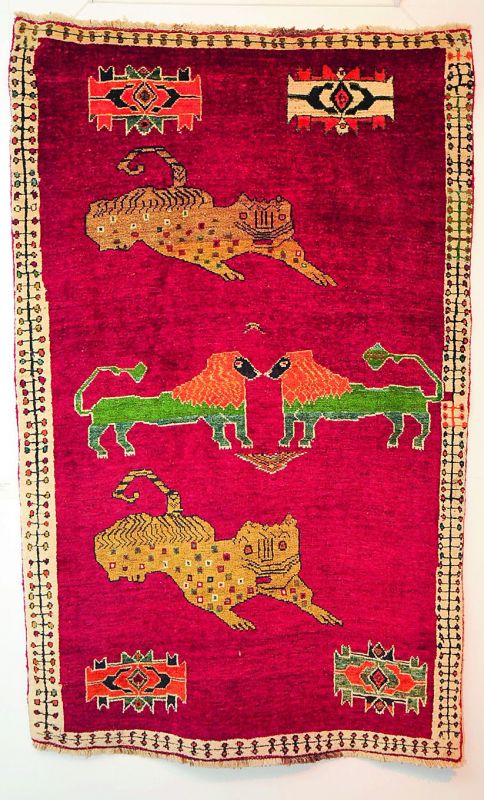Woven Treasures

After doing rounds of other Indian cities, precious rugs dating back to the 19th and 20th Centuries from Baluchistan, Persia and Kurdistan, have found their way to the city. Unique to their nomadic roots, these hand-woven collectibles are weaved by the tribal women of these areas. Revealing this rich legacy are collectors Anil Menon and Danny Mehra for the show — Woven Memories: Stories through Tribal Carpets.
 Danny Mehra: The 15 ft long and 4 ft wide rug from the early 19th century
Danny Mehra: The 15 ft long and 4 ft wide rug from the early 19th century
Sharing a unique bond for rugs, both met five years ago and have become great friends. Anil says, “There is a prayer rug which I came across in my initial days of collecting that sparked my love for rugs, especially the Baloch ones.” It is no different for Danny as well. One of his favourites is the 15 ft long and 4 ft wide rug from the early 19th Century which he bought from a collector in Germany. “At the exhibition, there are around 38 rugs on display and the reason we came up with this exhibition is to raise awareness about these beautiful pieces of work, and also to create more collectors in India,” shares Anil.
The first thing you will notice about these rugs is how different they are from the Kashmiri ones, which are more common in India. Their big medallions or florals in a much organised design portrays a formal look. These rugs on display are of a spontaneous design, similar to embroidery.
 Lion on the edge: Weavers highlighted wild animals on rugs
Lion on the edge: Weavers highlighted wild animals on rugs
 Rare buy: A vibrant portrait rug on display
Rare buy: A vibrant portrait rug on display
Elaborating on the difficult life these nomadic weavers, Anil says, “As they used to move around, they would wrap up their work, dismantle their looms and again start afresh in a different place, and also retain continuity.” Perhaps this nomadic lifestyle adds to their work. Each rug on display tells a different story — colours, textures and weave. “Persian, Baloch and Kurdish rugs are different from each other. Baloch rugs have distinctive colours, patterns and size. It’s an evolved stage of work with most numbers of saturated colours. If one places a bright torch light on it, one can easily see the variety of hues just popping out from the otherwise subdued palette,” says Anil. Danny further explaining on why it is similar and yet so dissimilar, says, “Communities in Central Asia are very close knit and that’s the cradle of carpet weaving. Persian rugs would have the Qashqai, Luri, Arshad and Gabbeh work. Gabbeh meaning unclipped in Persian have a very funky work and the ends will have a longer pile and have a shaggier look. On the other hand, Caucasian rugs are very colourful. A typical Baloch will have three or five colours but a Caucasian rug may have 10 hues. Whereas, an unusual Kurdish rug may contain 15 to 20 colours.”

